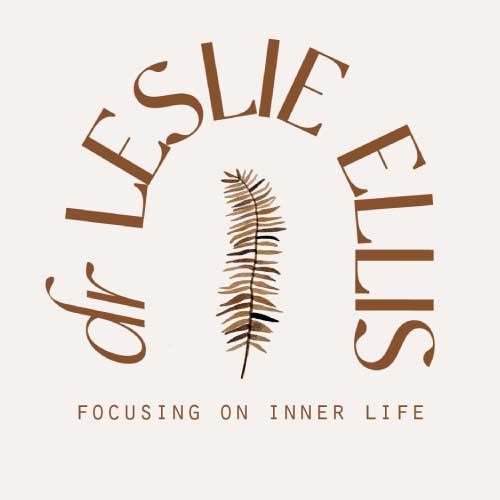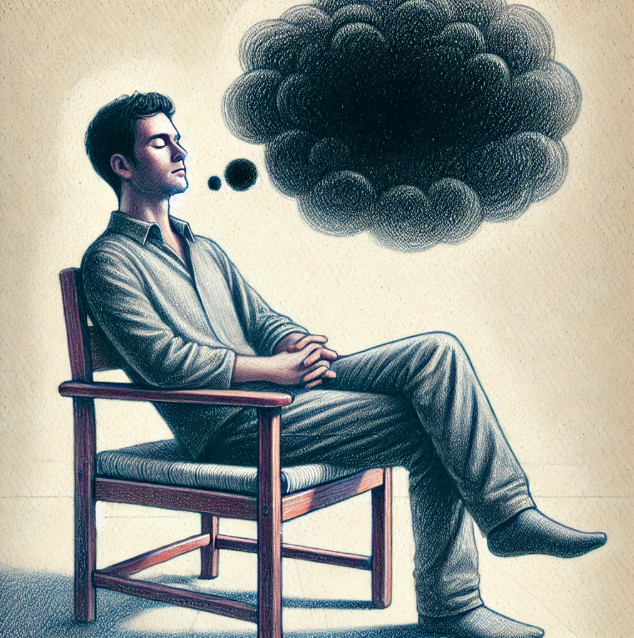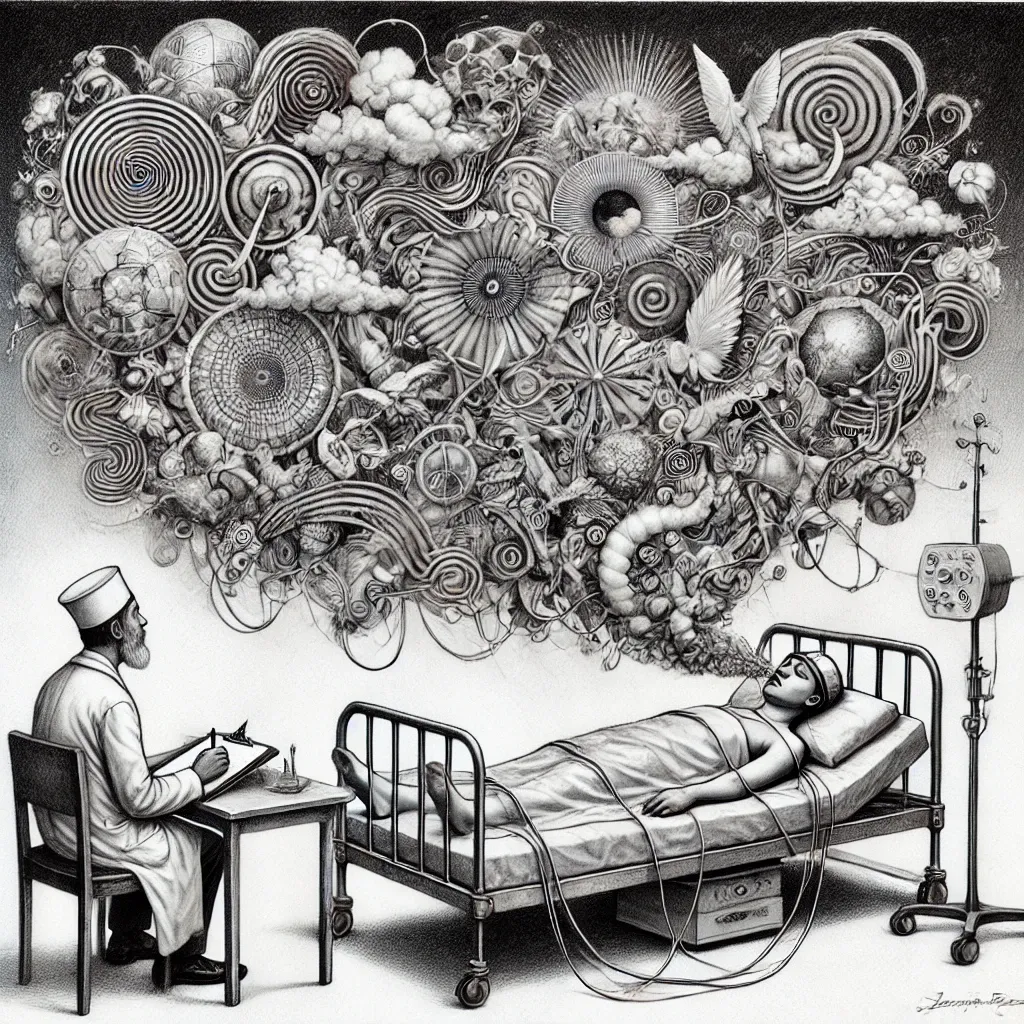In my work is an experiential and dream therapist, I often invite my clients to enter their dreams, allowing their nocturnal imagery to re-form in their mind’s eye. Most people I ask can do this quite easily, and some produce a virtual torrent of imagery. But not everyone can, and I used to think of this as an ability that varies but can be developed. What I have recently discovered is that there are some people born without the ability to visualize memories, imaginary scenes or future scenarios. Interestingly, this condition, called aphantasia, does not prevent people from dreaming, but their ability to voluntarily bring images to mind is absent.
Do you have aphantasia? When you close your eyes and try to picture a sunset, what do you see? For most of us, a mental canvas springs to life – gorgeous hues of glowing red and orange spread across the horizon. But for roughly 2-5% of the population, this simple act of visualization is impossible. For those with aphantasia, the mind’s eye is effectively blind. And with it, some of their ability to process emotion appears to be affected as well.
One proposed function of imagery, used often by therapists, is to render memories, dreams and thoughts more emotionally evocative through sensory simulation. Wicken and colleages (2019) tested this theory using aphantasics. “After using multi-method verification of aphantasia, we show that this condition, but not the general population, is associated with a flat-line physiological response to frightening written, but not perceptual scenarios.” This finding supports imagery’s critical role in evoking and processing emotion.
Aphantasia: A broad spectrum
The term aphantasia was coined by cognitive neurologist Professor Adam Zeman in 2015. Zeman (2024) places the vividness of ability to create internal imagery on a spectrum – from those who have no ability to visualize to those who experience hyperphantasia, an unusual abundance of mental imagery. He notes increasing evidence that aphantasics have some distinctive traits such as reduced autobiographical memory and face recognition, a greater interest in scientific occupations, and a greater propensity for autism. He suggests variation in neural connectivity may be the cause. Interestingly, those with aphantasia still experience dream imagery – possibly because our nocturnal imaginings are largely involuntary.
Zeman wrote: “Despite the profound contrast in subjective experience between aphantasia and hyperphantasia, the effects on everyday functioning are subtle – lack of imagery does not imply lack of imagination.”
Picture a safe place…
Meet Sarah (name changed), an architect who discovered her aphantasia during a particularly awkward moment in therapy. “My therapist asked me to close my eyes and picture my safe place. I sat there for what felt like an eternity, trying to explain that while I understood the concept of creating the image of a warm, protected place, I couldn’t actually ‘see’ one. She thought I was being resistant to the treatment. That’s when I realized I was different from most people.”
The irony of an architect who can’t visualize buildings isn’t lost on Sarah. “People assume I must be in the wrong profession, but I’ve developed other ways to think about space and design. I work with physical models and CAD software. My inability to visualize actually makes me more methodical and precise in my approach.” This notion is supported by research that shows visual working memory tasks are not impaired in those with aphantasia, they simpy use different strategies to work through questions most of us would visualize.
Causes unclear, but treatment not necessary
The scientific community is still unraveling the many outstanding mysteries of aphantasia. It appears to be linked to reduced connectivity between the frontal and visual networks in the brain. But the cause of this disconnection is not clear. Most cases appear to be congenital, while others develop after trauma or injury. Dr. Rebecca Keogh’s (2018) research at the University of New South Wales suggests there might be a genetic component, though the inheritance pattern remains unclear.
The condition exists on a spectrum. Some aphantasics report complete inability to generate any sensory imagery – not just visual, but auditory, olfactory, and tactile as well. Others might have partial imagery abilities or can experience involuntary images in dreams, despite being unable to consciously conjure them while awake.
Currently, there is no established treatment for aphantasia, primarily because it’s not classified as a disorder or disability. Aphantasics excel in fields from science to literature. For example Craig Venter, one of the first scientists to sequence the human genome, is aphantasic. His inability to visualize didn’t prevent him from making groundbreaking scientific discoveries.
The discovery of aphantasia has sparked fascinating philosophical questions about consciousness, creativity, and the nature of thought itself. How essential is mental imagery to human experience? Can abstract thinking compensate for the lack of visual imagination? These questions are driving new research in cognitive science and challenging our assumptions about how the mind works.
Perhaps the most intriguing aspect of aphantasia is how it remained largely unrecognized until recently. People with aphantasia often assume everyone experiences thought the same way they do – through conceptual understanding rather than mental imagery. It’s like discovering that while you’ve been watching a black and white TV all your life, others have been watching in color. For those curious about their own visualization abilities, researchers have developed various assessment tools, including the VVIQ (Vividness of Visual Imagery Questionnaire). However, measuring something as subjective as mental imagery remains challenging.
As we advance our knowledge of aphantasia, the focus shouldn’t be on “fixing” what isn’t broken, but rather on understanding and accommodating different ways of thinking. Sarah puts it eloquently: “Having aphantasia isn’t like missing a limb – it’s more like being left-handed in a right-handed world. Once you figure out your own way of doing things, it stops being an obstacle and becomes just another part of who you are.”
References:
Arcangeli, M. (2023). Aphantasia demystified. Synthese, 201(2), 31.
Blomkvist, A., & Marks, D. F. (2023). Defining and ‘diagnosing’aphantasia: Condition or individual difference? Cortex, 169, 220-234.
Blomkvist, A. (2023). Aphantasia: In search of a theory. Mind & Language, 38(3), 866-888.
Dance, C. J., Ipser, A., & Simner, J. (2022). The prevalence of aphantasia (imagery weakness) in the general population. Consciousness and Cognition, 97, 103243.
Dawes, A. J., Keogh, R., Andrillon, T., & Pearson, J. (2020). A cognitive profile of multi-sensory imagery, memory and dreaming in aphantasia. Scientific reports, 10(1), 10022.
Keogh, R., & Pearson, J. (2018). The blind mind: No sensory visual imagery in aphantasia. Cortex, 105, 53-60.
McKelvie, S. J. (1995). The VVIQ and beyond: Vividness and its measurement.
Whiteley, C. M. (2021). Aphantasia, imagination and dreaming. Philosophical Studies, 178(6), 2111-2132.Wicken, M., Keogh, R., & Pearson, J. (2019). The critical role of mental imagery in human emotion: Insights from aphantasia. biorxiv, 726844.
Zeman, A., Dewar, M., & Della Sala, S. (2015). Lives without imagery – Congenital aphantasia. Cortex, 73, 378-380.
Zeman, A. (2024). Aphantasia and hyperphantasia: exploring imagery vividness extremes. Trends in Cognitive Sciences.
Join me on substack for an ongoing journey into the world of dreaming!
www.https://dreamsdemystified.substack.com/
Subscribe to get full access to my complete book chapters, publication archives, and to come: recordings, lectures, papers and more.



